The Role of ERVs and HRVs in Home Comfort
Over four decades ago, when the trend toward building very tight, energy efficient homes started gaining popularity, our team at Save Home Heat Company installed products known at the time as air-to-air heat exchangers. Coincidentally, the products we installed at the time were manufactured by our mini-split partner, Mitsubishi Electric. Over 40 years later, now known as Energy Recovery Ventilators (ERVs) and Heat Recovery Ventilators (HRVs), these products are a proven solution for homes that, even with properly functioning kitchen and bath fans, may suffer from unhealthy indoor air. In short, these ventilators bring fresh outside air into the home while exhausting indoor air at the same time – retaining the indoor heat in the process.

As we’ve discussed in previous blog posts, many indoor environments, including our homes, likely produce a broad range of indoor air pollutants that are potentially harmful to our health if they accumulate at high enough levels. Enter energy recovery and heat recovery ventilators, which are designed to help address these conditions. ERVs and HRVs are available for single-room applications, as well as larger units sized to service an entire home.

In this blog post, we’re going to take an introductory look at whole-house ERVs and HRVs, referring to the products manufactured by Lennox Industries that we currently install for our customers.
What are ERVs and HRVs?
Both energy recovery ventilators and heat recovery ventilators are designed to exhaust stale indoor air to the outdoors while bringing fresh air into the home. These ventilation products contain two internal fans which simultaneously bring fresh air into the home while expelling indoor air to the outdoors. The heart of these units is a core element that exchanges heating or cooling between the two separate airstreams. Standard single-core, whole-house units have 4 pipe connections (the size varies), two for the output side (directing indoor air to the outside) and two for the incoming fresh air side.
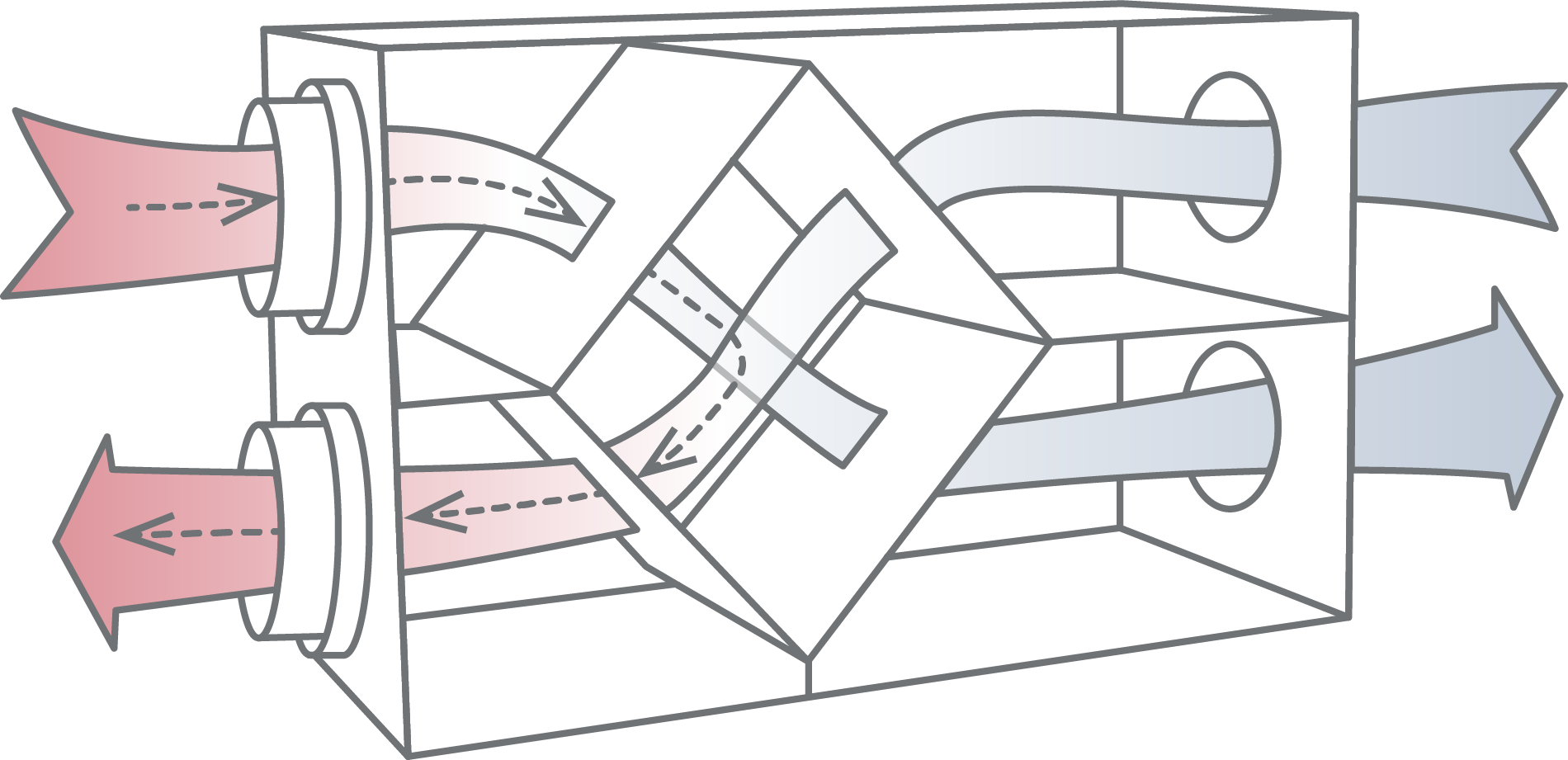
The whole-home HRVs and ERVs from Lennox that our team installs – which essentially differ from each other in the heat exchange core’s construction – are designed to work either connected to an existing centrally ducted heating or cooling system, or they can operate independently with separate ducting.
The benefits of HRVs and ERV include:
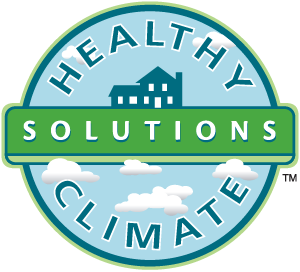
- An energy efficient, effective, year-round way to provide natural ventilation to your home throughout changing seasons
- Effective at providing natural ventilation to your home without opening windows and doors, which invites outdoor allergens to come calling unimpeded
- An economical and efficient way to bring fresh air into your home – without adding additional load on your heating or air conditioning system
- These are 100% non-ozone producing indoor air quality (IAQ) products
Regarding the question of whether an ERV or an HRV is more appropriate for homes in the Denver-Boulder metro area, there is currently a bit of a gray area in our industry (but not with our team) as to which product is most appropriate for the variety of homes we visit. The discussion focuses on the heat exchange core and the nature of the climate in our region. While we plan to address these differences in greater depth in a future post, our customers can rest assured that – as always – our team is very knowledgeable and experienced with the products we install. We work closely with each homeowner to determine the product or products that best address their specific needs and is the right fit for their home.
ERV and HRV Installation Basics
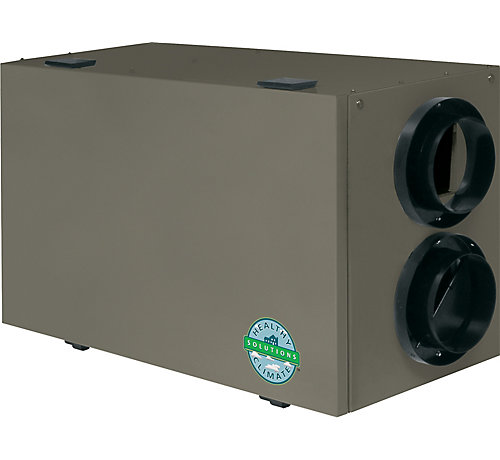
When installing a whole-home ERV or HRV, for optimal performance Lennox recommends locating the ventilator in an unfinished, conditioned space, preferably close to the exterior wall where the two outside weather hoods will be installed. Common locations for a unit include a basement, mechanical room, or laundry room. Lennox recommends avoiding installation in an attic, if possible, and unheated crawlspaces are also considered not to be ideal.
Whole-home rated ERVs and HRVs are available in a variety of sizes, with different fan ratings and core sizes. Matching the right size unit for the application is one of several important considerations when specifying a new installation.
Whole-Home ERVs & HRVs Connected To A Furnace
Whole-house ERV and HRV systems can be installed in a variety of configurations. They can be connected to the main ducting and incorporated into an existing central furnace system, which is a nice, streamlined way to provide whole-home effectiveness.
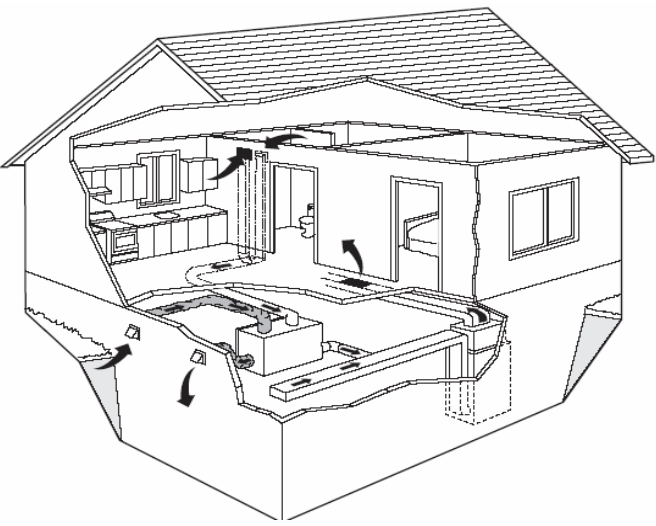
Independent ERV and HRV Systems
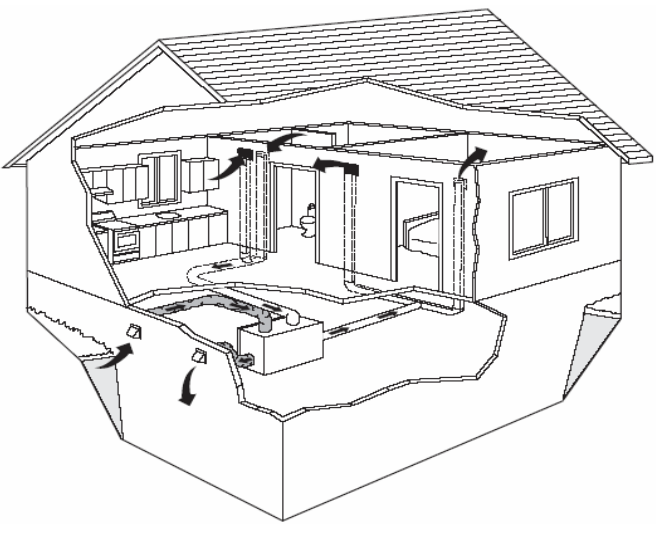
These versatile fresh-air systems can also be installed with an independent ducting system (with new air grilles and registers), whose size and complexity – as well as the size of the unit itself – depends on the specifics of the area being served. If a significant number of rooms are being served, an air handler may be used to handle air circulation through the ducting, but in cases where the area is relatively modest, the built-in fans in the ventilators may be able to perform double duty.
In this type of system design, utilizing a relatively modest ducting system, indoor air is often drawn from rooms such as the kitchen, bathrooms, or the utility room, where stale indoor air is most likely to gather. Fresh outdoor air is then delivered to areas such as living rooms, dens, and bedrooms. In this fashion, with properly designed airflow and ducting, virtually the entire home can be served.
As we have seen with a number of other indoor air quality (IAQ) products such as central air purifiers, high efficiency air filters, and high performance steam humidifiers, ERVs and HRVs can be easily adapted for homes that don’t have a central ducting system. Think of an independent, dedicated, whole-house IAQ system!
Homeowners that have hot water heat (baseboards, radiant floor, etc.), please take note: Benefits such as these may be possible for your home, too!
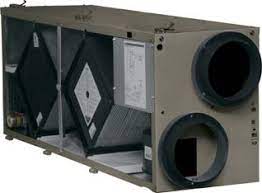
Maintenance Needs of ERVs and HRVs
As with nearly all mechanical and home comfort equipment, routine maintenance is essential in order to assure optimal effectiveness and operating efficiency, as well as to help avoid unforeseen parts failures and extend equipment life.
Recommended Maintenance Schedule
Lennox and other manufacturers provide detailed guidelines for the proper upkeep and routine maintenance of their ERVs and HRVs. Of course, the amount of usage and other household-specific factors may impact the reality of what the system requires, but the following list from Lennox is a good starting point for understanding the needs of these products:
- Inspect and clean the outdoor weather hoods once a month
- Clean the permanent air filters every four months
- Clean the heat exchange core every four months
- Clean condensate drain line once a year
- Have the two blowers cleaned by a trusted HVAC professional once a year (Note: the motors are considered maintenance free, but their vent openings should be vacuumed periodically)
- If your HVAC contractor feels appropriate, have the ducting system cleaned and serviced routinely. Based on our team’s experience, this should not be necessary every year, assuming the other maintenance tasks are kept up with regularly
- Our team also recommends routinely inspecting and dusting off any air supply registers and grilles that are part of your system
Should You Consider an HRV or ERV for Your Metro Denver-Boulder Home?
![]() If you’d like to learn more about whether one of these whole-home fresh air products, or any other IAQ product, makes sense to consider for your home, you can rely on our team at Save Home Heat Company to provide you with ample amounts of information and to answer all your questions in a friendly, low-pressure manner. Please reach out to us today for expert, professional services for your Boulder-Denver area home.
If you’d like to learn more about whether one of these whole-home fresh air products, or any other IAQ product, makes sense to consider for your home, you can rely on our team at Save Home Heat Company to provide you with ample amounts of information and to answer all your questions in a friendly, low-pressure manner. Please reach out to us today for expert, professional services for your Boulder-Denver area home.
Please contact me to schedule a free IAQ install quote for my home!




